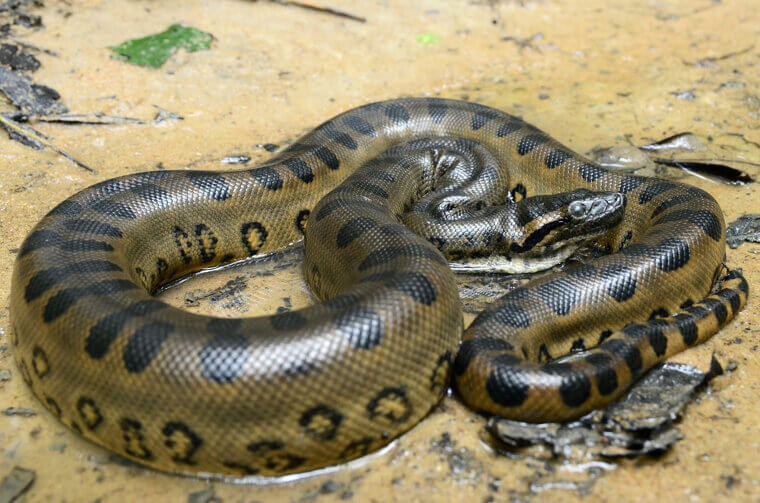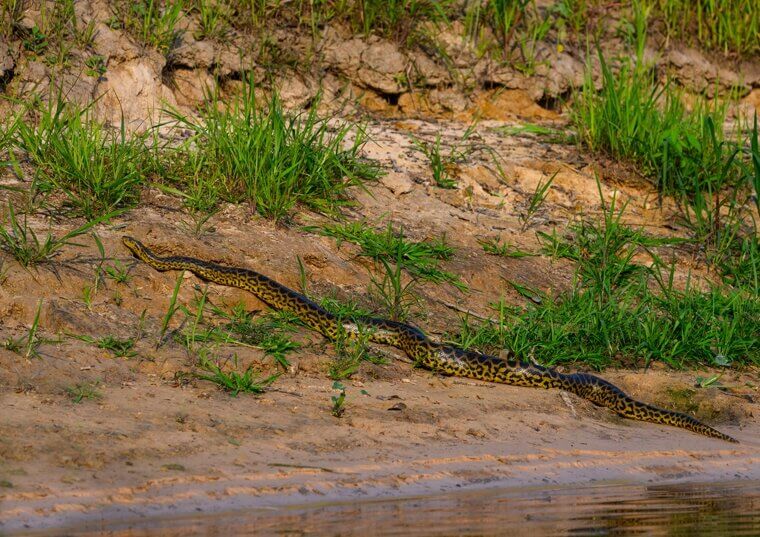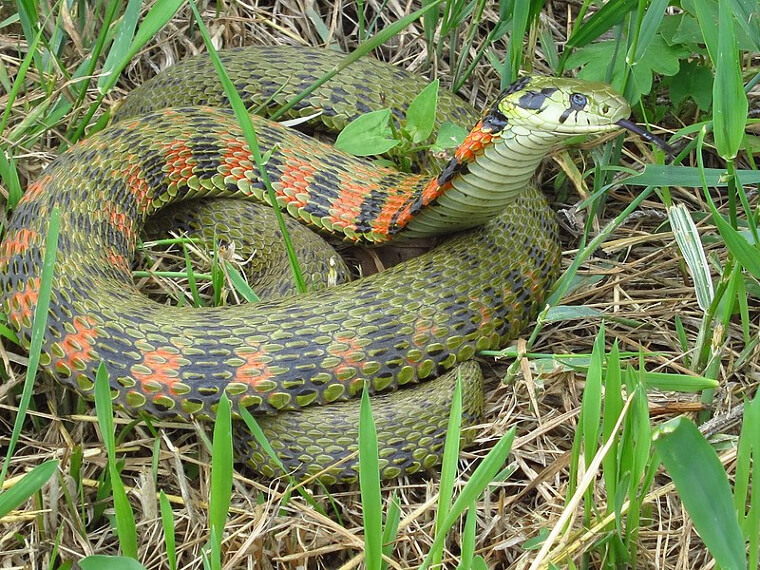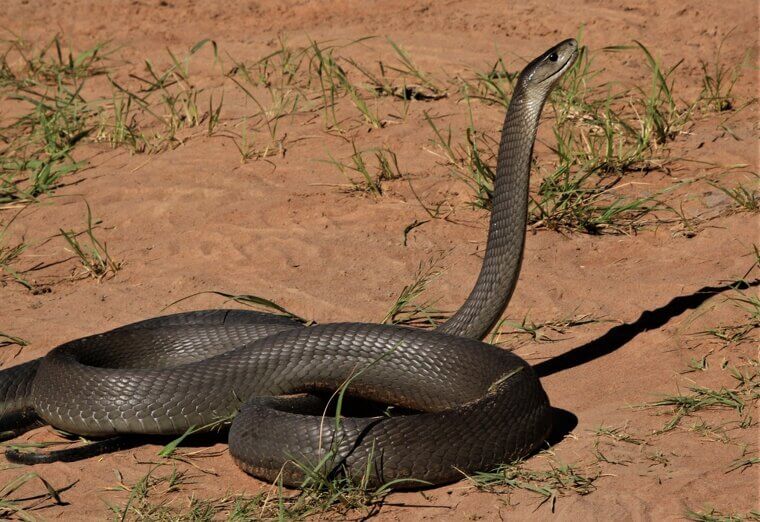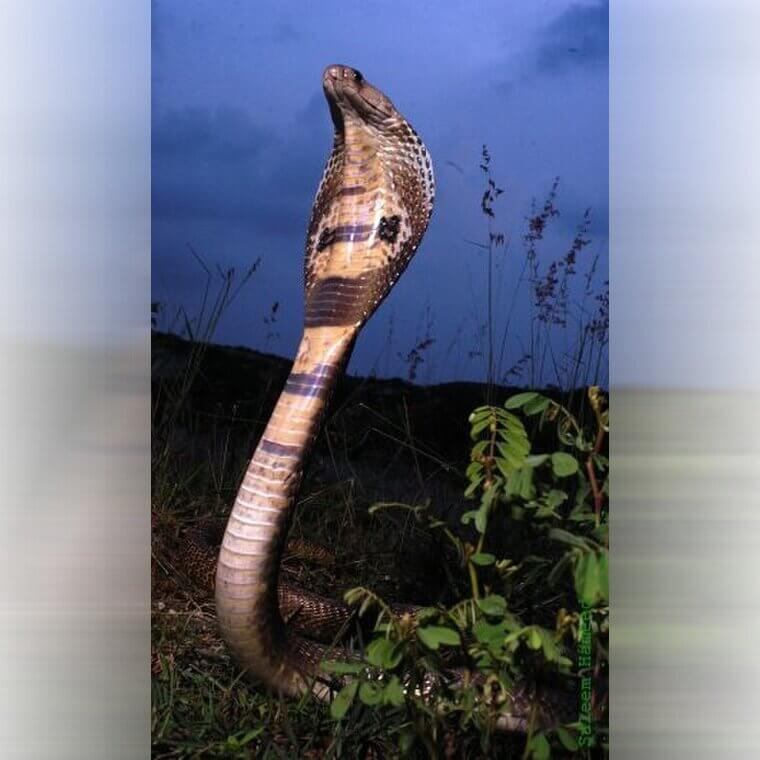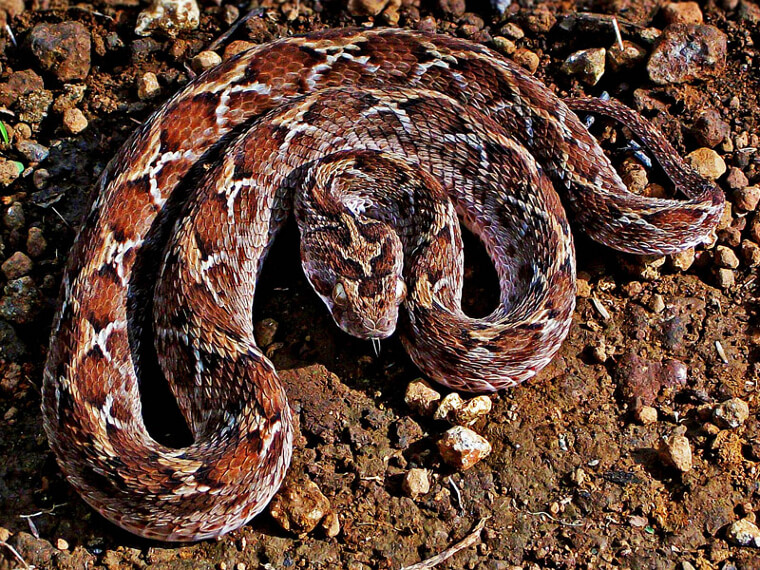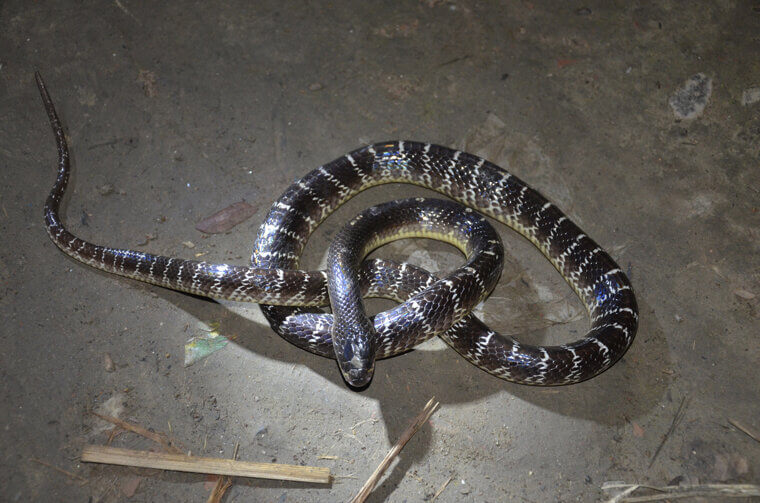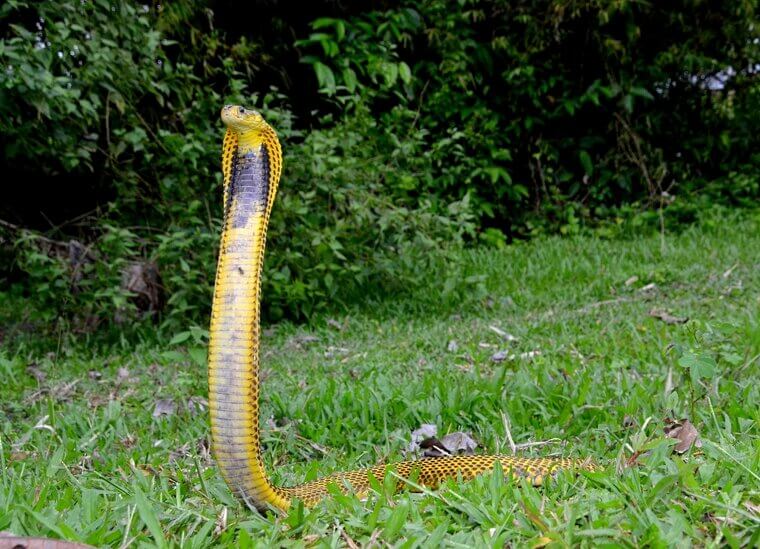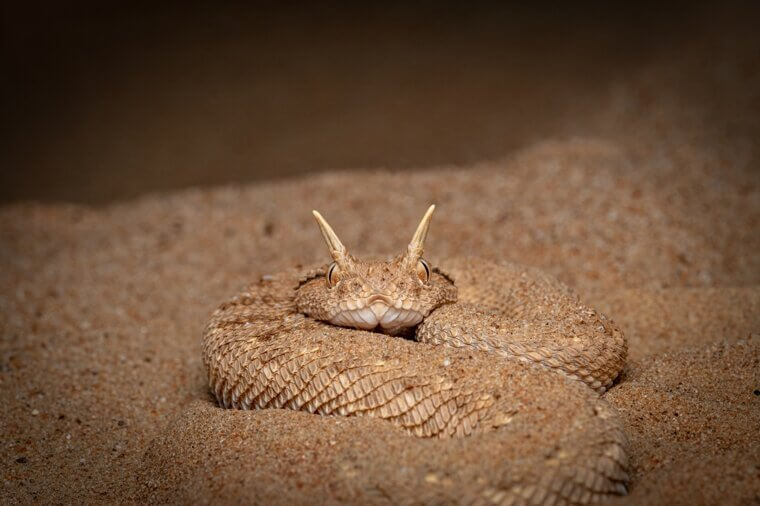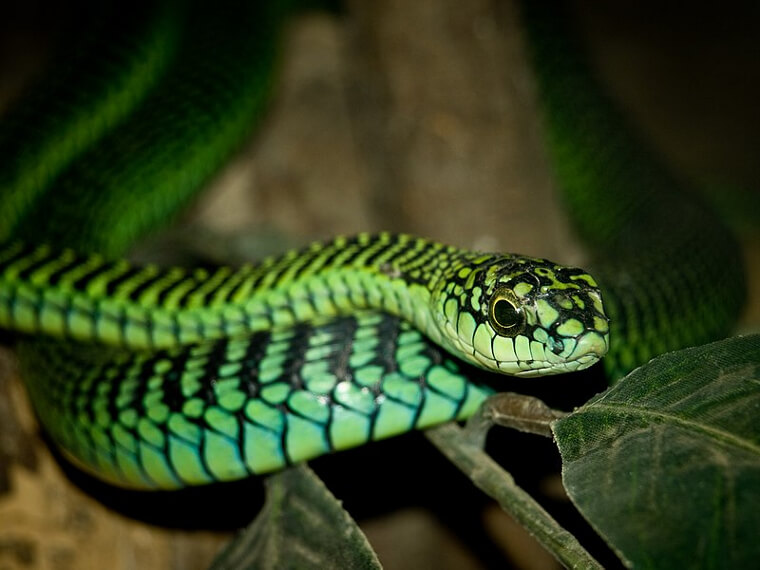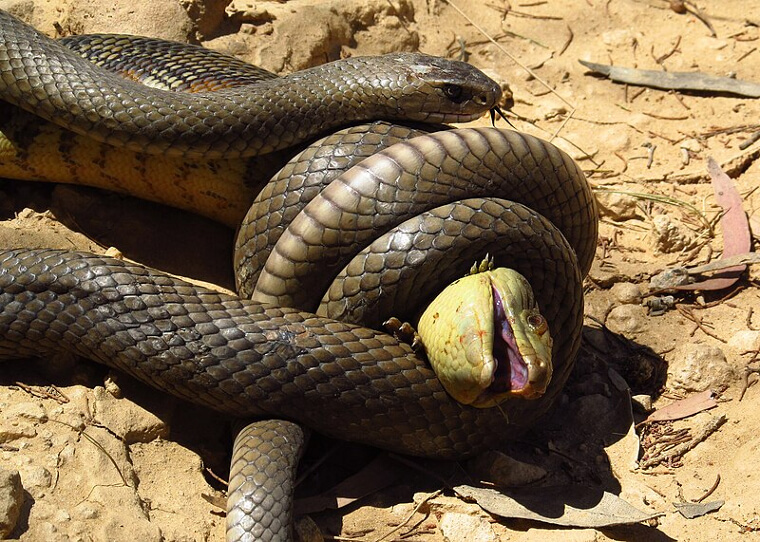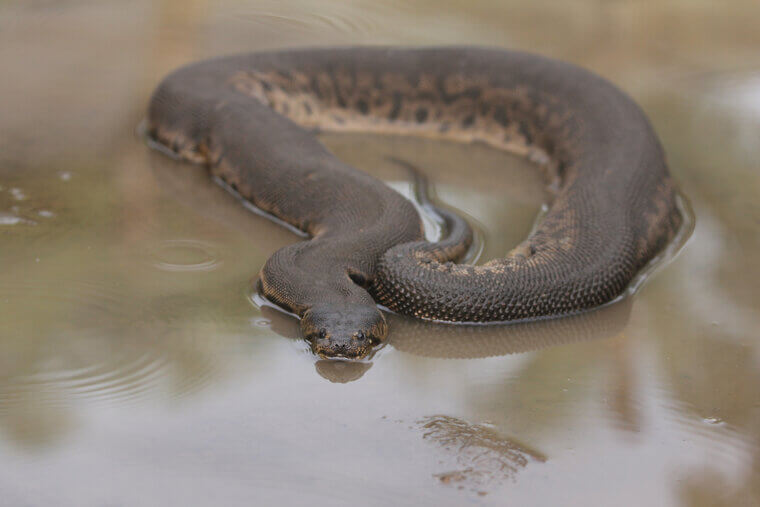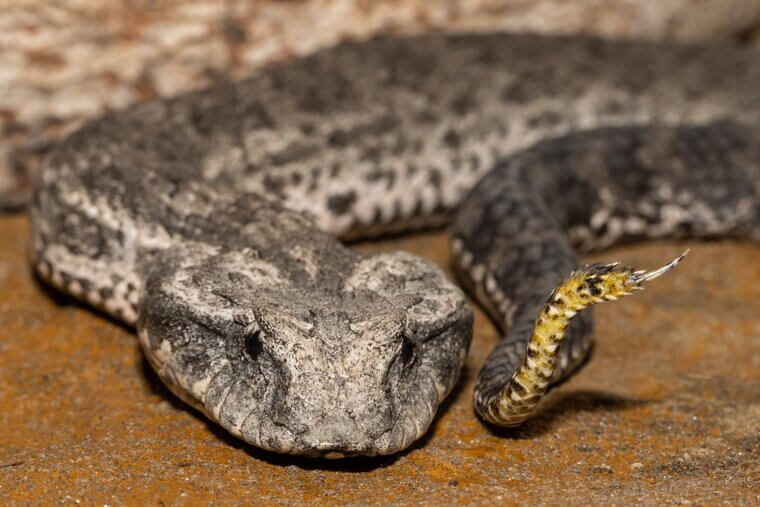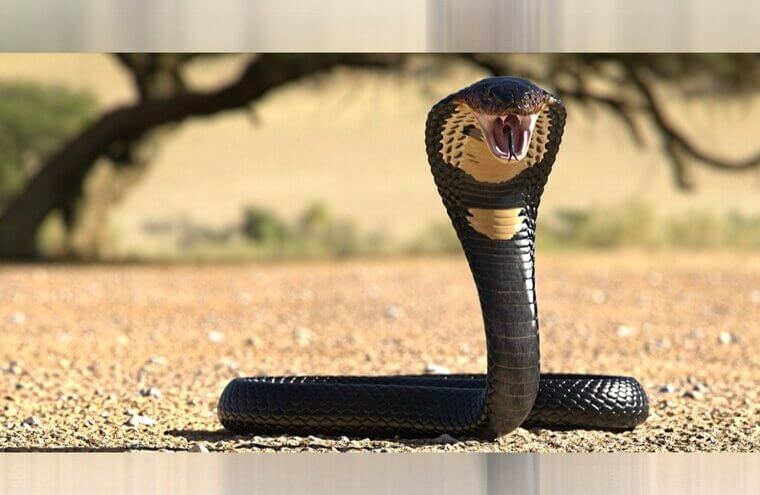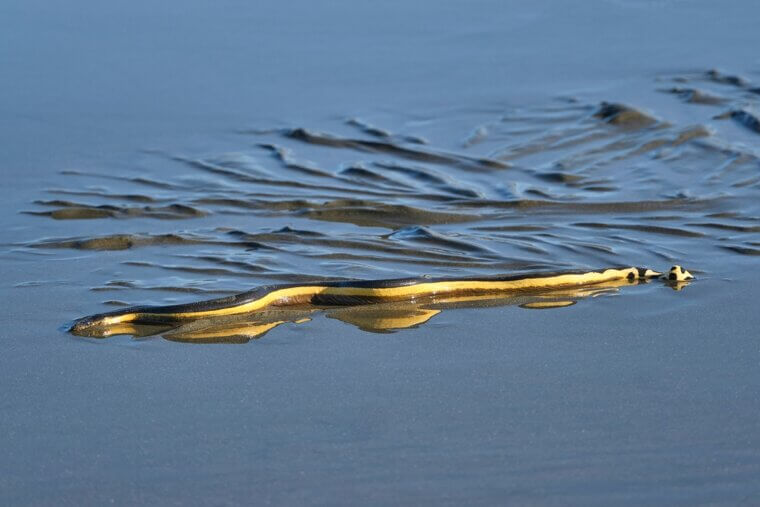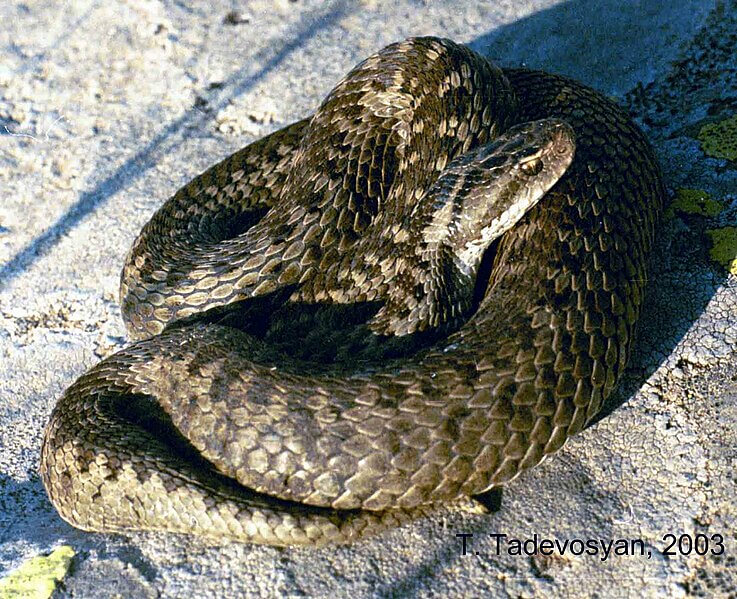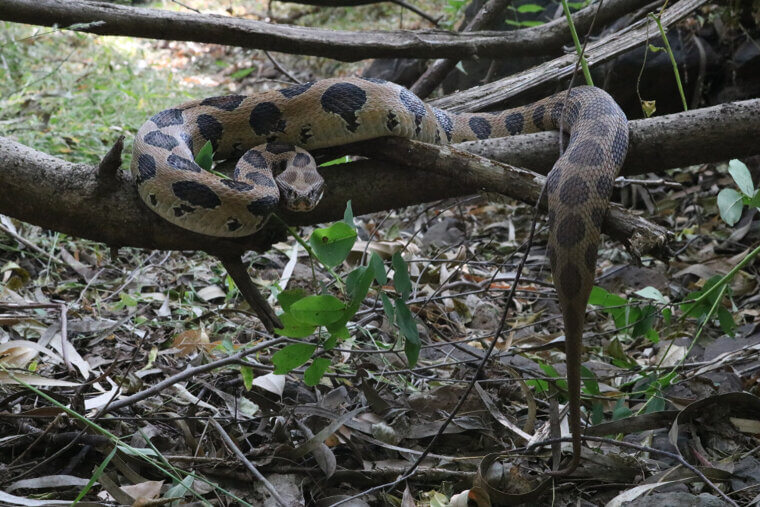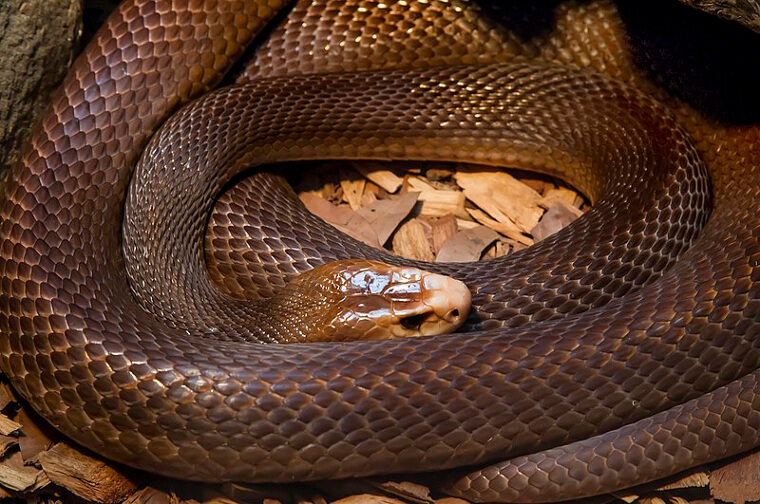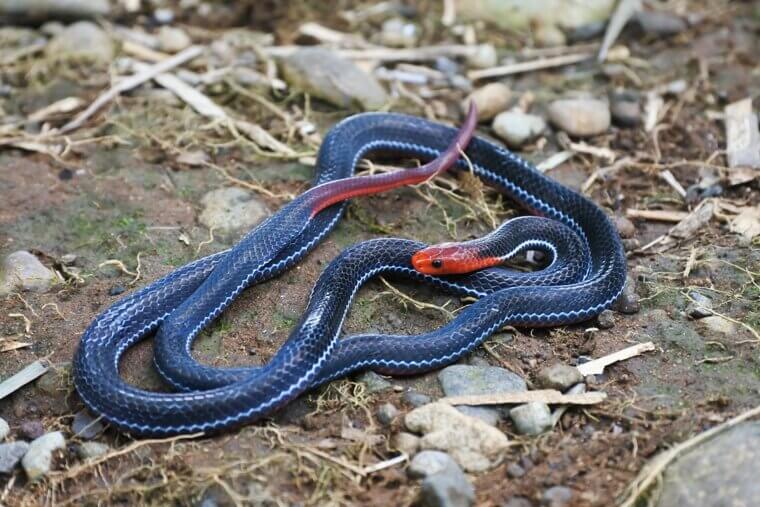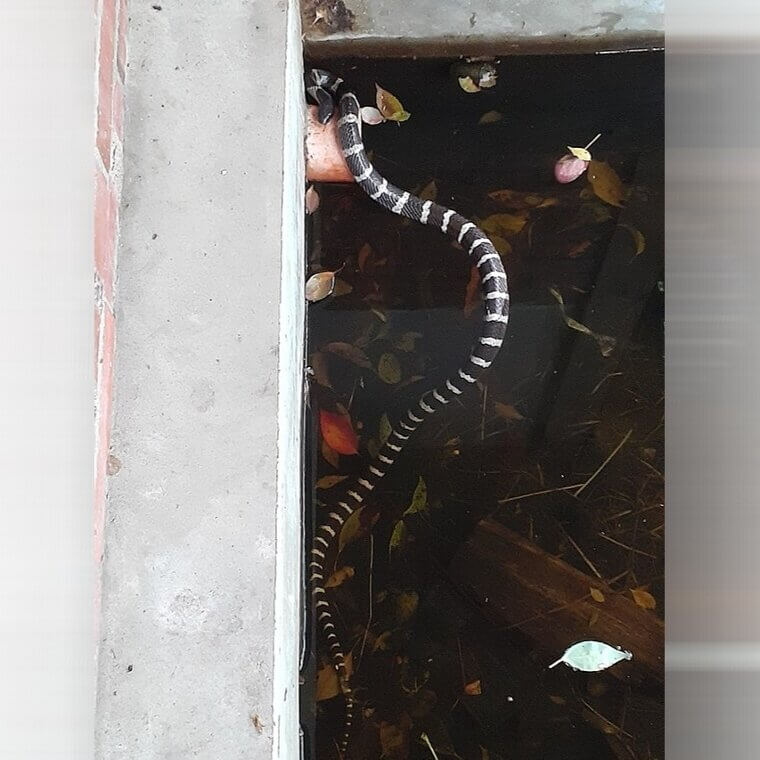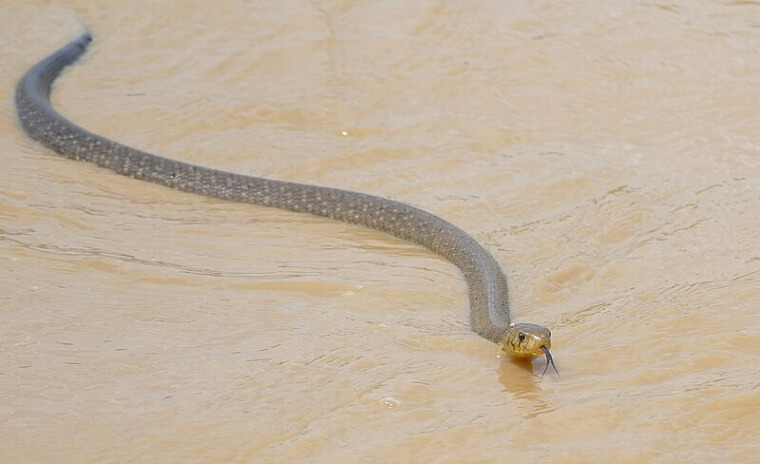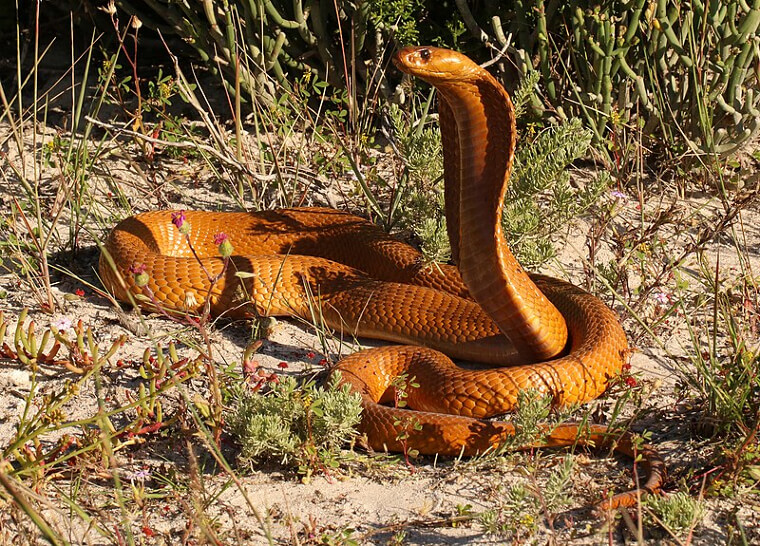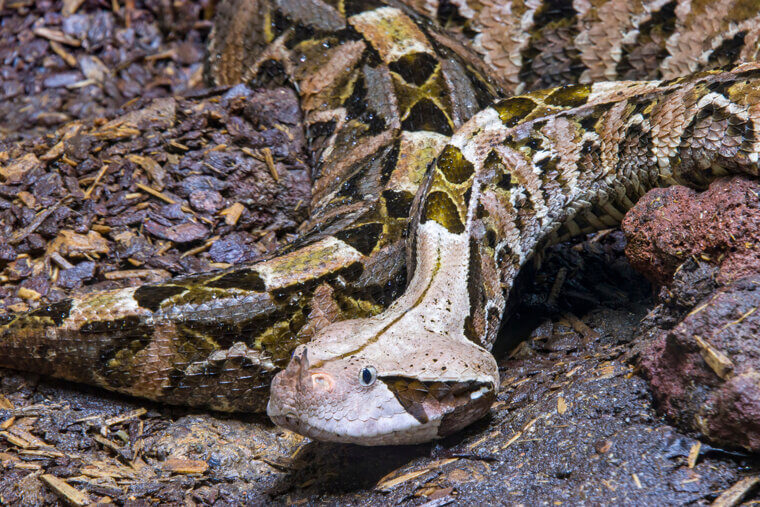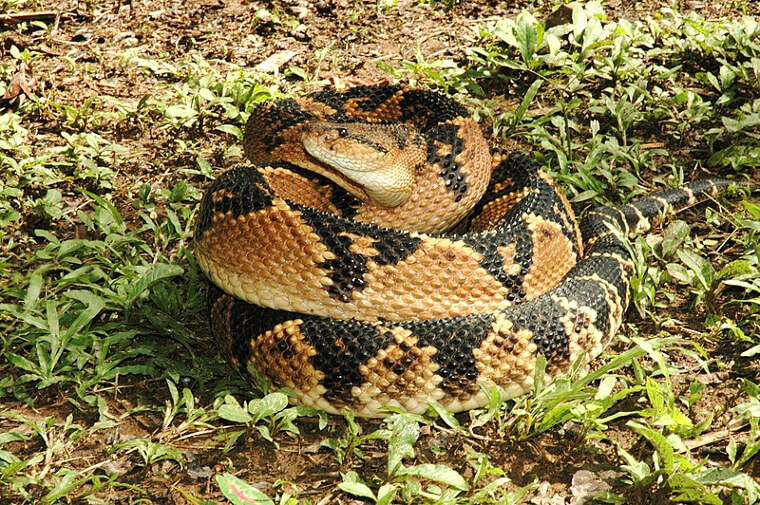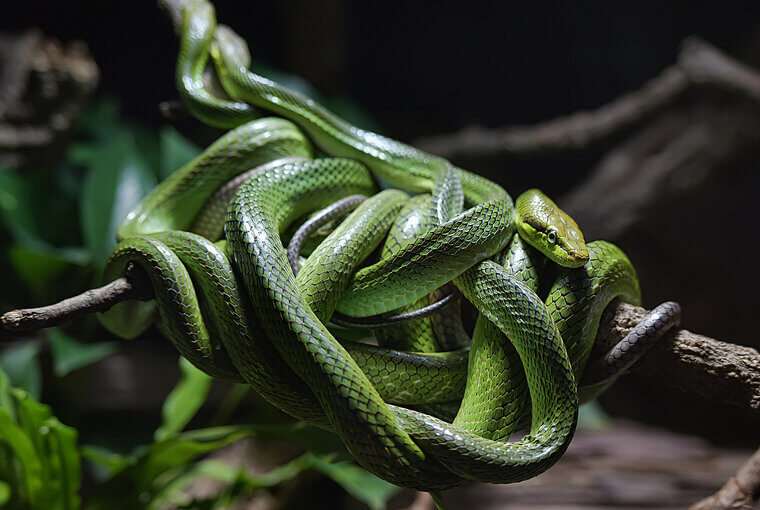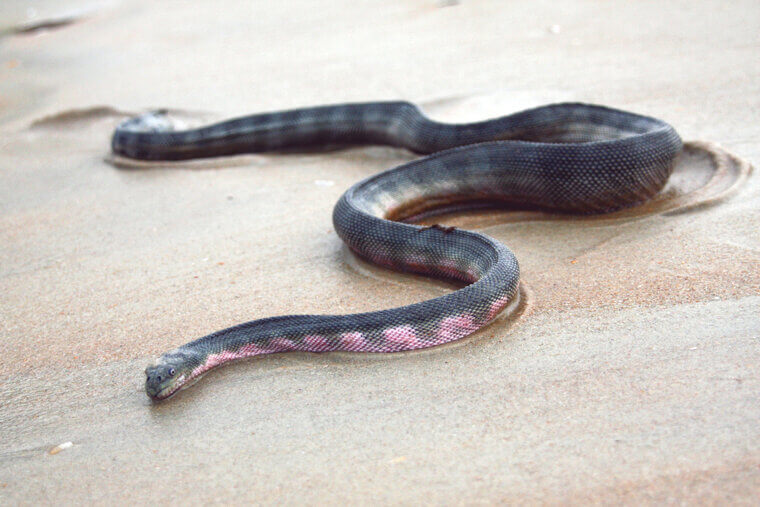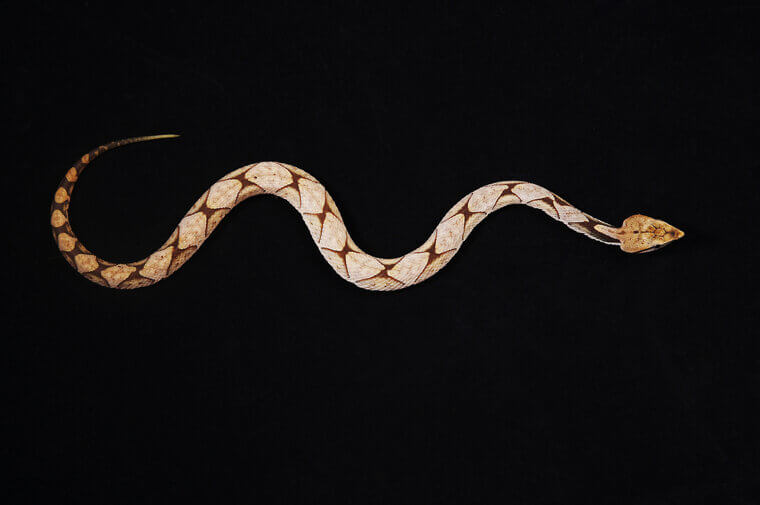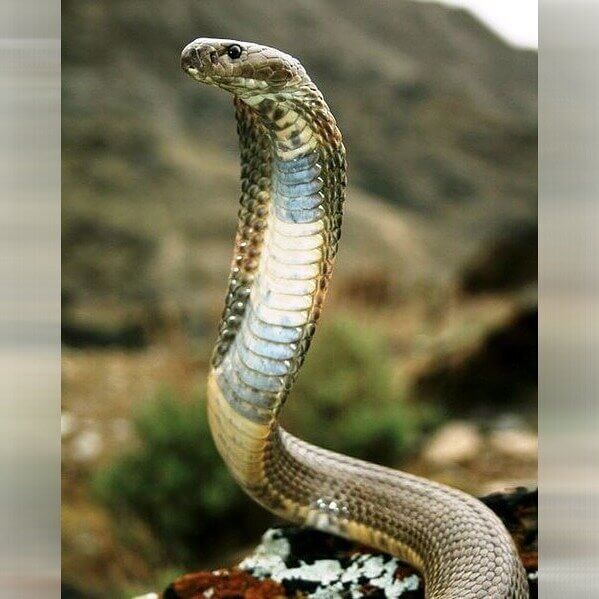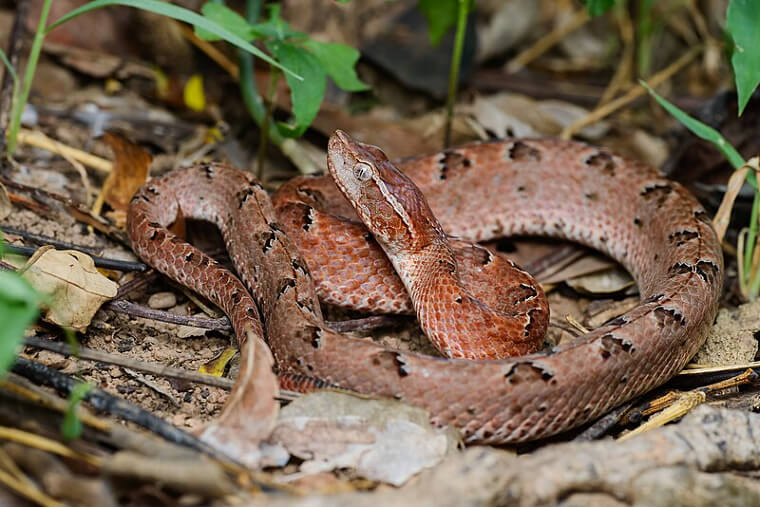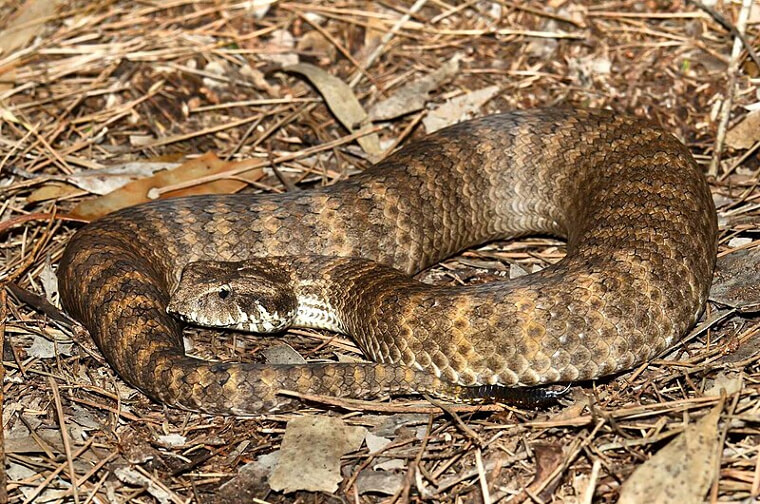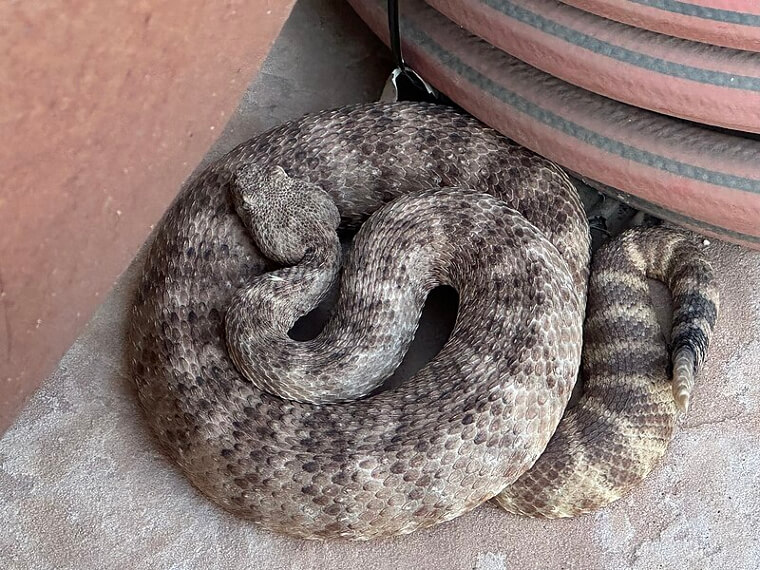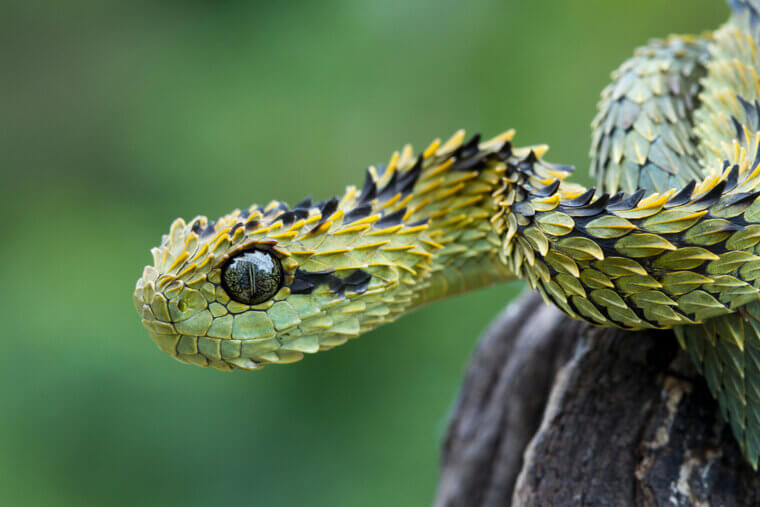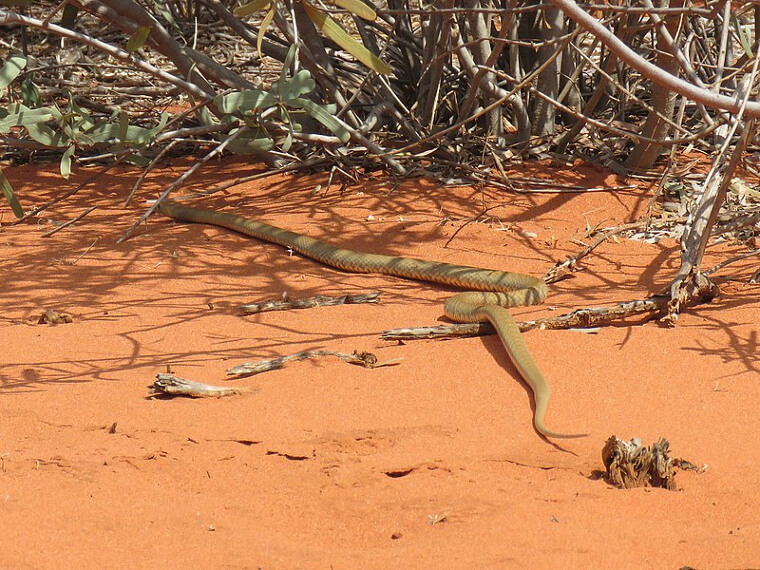Jararaca - Southeastern Brazil
Southern America is home to many different dangerous snakes, and this pit viper is known to have one of the most potent venoms around. The jararaca is relatively common in the areas it calls home, meaning encounters with the snake can be pretty common. This has made the distribution of antivenoms much more critical, as this snake has quite the track record. For a 60 kg adult human, the lethal dosage is only 70 mg.
While it may not be the most lethal snake, this one remains quite dangerous, especially considering it's found in many urban areas. This snake was famously responsible for over 3,000 bites between 1902 and 1945.
Green Anaconda - Brazil
Found in many parts of Brazil and the northern regions of South America, the green anaconda - or simply anaconda as many people call it - is perhaps the most infamous snake in the world. While films have greatly exaggerated the snake's size, it remains the heaviest in the world and the second longest. The sheer size isn't all that makes this snake dangerous, as its fangs - while lacking any venom, are infamously sharp and difficult to remove once it gets a bite in.
As a constrictor snake, its primary method of killing is to latch onto victims and then wrap around its prey, slowly crushing and suffocating them to death. Human mortalities are rare, sure, but that doesn't make them any less dangerous for the unprepared.
Tiger Keelback - Eastern Asia
This snake, found in East Asia, is well-known for its strange defense mechanism. These snakes are less commonly found than others you might hear of, as they are incredibly shy and tend to avoid populated areas. They are less likely to bite in defense and tend to hide away by flattening themselves or fleeing away. Bites tend to be rare because of this, although they have occurred and can lead to death for those who don't get antivenom.
Perhaps most strangely is how it defends itself from other predators. These snakes often consume poisonous toads and store the toxins that are absorbed from the toads in special glands that release this poison when the snake is attacked.
Black Mamba - Southern and Eastern Africa
The Black Mamba is one of the most highly toxic snakes in the world. These predators are known to inhabit the ground and stalk terrestrially. They are also tree-dwellers, meaning they can strike their prey from above. When threatened, these snakes bear their fangs and open their mouths, which are entirely black and are the namesake of the mamba. These snakes are also incredibly quick, able to strike multiple times in a series of rapid bites.
These bites deliver a potent and deadly neurotoxin that will quickly induce symptoms within 10 minutes. If no treatment is received, death will likely occur in less than 15 hours, with symptoms worsening.
Eastern Diamondback - Southeast America
Rattlesnakes are a subfamily of pit vipers well known for the eponymous rattle at the tips of their tails. These snakes rattle the hollow tips of their tails to deter predators, and - to humans at least - will act as a warning that the snake is feeling threatened and could strike. The Eastern Diamondback is the most well-known for being the most dangerous venomous snake in North America, with a mortality rate between 10% and 30%, according to various studies.
The Eastern Diamondback is the heaviest and largest rattlesnake, and its venom is one of the most studied. It's estimated to have over 100 unique toxins that contribute to its deadliness.
Indian Cobra - India
One of the "Big Four" Indian species of snakes known for their incredibly high number of bites, the Indian Cobra is near the top of the highest number of incidents throughout the country. These large snakes have the signature hood and are quite large. They are culturally revered and protected throughout India. That doesn't stop them from being quite dangerous, however, as their bites deliver a potent neurotoxin and cardiotoxin that can prove fatal if left untreated.
Their venom is particularly nasty, as it will paralyze the muscles of victims and cause more severe bites, leading to cardiac arrest and respiratory failure. These snakes, thankfully, have a lower fatality rate as treatments and antivenoms are readily available.
Saw-Scaled Viper - Southwest Asia
Saw-scaled vipers are a genus found in many dry parts of Asia, including the Middle East, India, Sri Lanka, Pakistan, and Northern Africa. They are known for their unique and characteristic way of warding off predators. The snakes will give a warning by rubbing sections of their body together, creating the signature "sizzling" or "sawing" sound. They are also known for being incredibly quick so you have to keep your eyes open for them.
Many of the snakes in this genus are responsible for the most snakebite-related deaths in the world. They are also nocturnal hunters, meaning many encounters will happen in the dark.
Common Krait - India
Another of India's Big Four, the common krait, is rarely seen during the day, where it usually hides and rests and is rarely seen. It can often be handled during this time as it is quite sluggish and permissible to light handling. However, the snake becomes far more active and aggressive at nighttime, hissing loudly and occasionally biting. It is responsible for 28% of the total snake bites in Bangladesh. When it does bite, it tends to hold on and inject much of its neurotoxic venom.
With plenty of its venom pumped into victims, it induces muscle paralysis and abdominal cramps. Death can occur as soon as 4 to 8 hours after the bite.
Philippine Cobra - Northern Philippines
This snake is possibly one of the deadliest venomous snakes in the world, the Philippine cobra is perhaps most well-known as a rare spitting snake. While it can spit its venom at a target up to 10 feet away, this characteristic is rare, as it much prefers to bite its victims. Its venom is considered to be one of the most toxic and deadly in the world and causes a variety of symptoms.
If bitten, symptoms include headaches, vomiting and nausea, abdominal pain, diarrhea, dizziness, and respiratory failure, all of which rapidly onset soon after the bite. Given the dangers, clinics in the Philippines have learned to verify signs of bites quickly.
Desert Horned Viper - Northern Africa and Southwestern Asia
Easily recognized for their distinctive "horns" found above their eyes, these sandy snakes are a species of viper that inhabit the deserts of Northern Africa. Like all vipers, what makes these snakes dangerous is their potent venom, with the desert horned viper's venom reportedly similar to saw-scaled vipers' venom. Bites will induce swelling, necrosis, and hemorrhaging, as well as nausea and vomiting. The hemorrhaging, in particular, is what makes the venom so deadly.
The estimated lethal dosage of their venom is only 40-50 mg for a 60 kg adult, making it quite potent. Each of the three subspecies is well known for its deathly bites.
Boomslang - Central and Southern Africa
Meaning "tree snake" in Dutch and Afrikaans, the boomslang is another tree-dweller that stands out from its cousins. While many snakes in the family Colubridae are mostly harmless to humans because of their small glands and fangs, the boomslang can effectively and dangerously bite people. Because of this, it can deliver a powerful hemotoxin that causes blood to clot in the bloodstream and prevents the body from producing more clots, causing massive blood loss.
Its venom has also been observed, causing internal hemorrhaging in the brain and muscles while clogging up capillaries with these tiny clots in the bloodstream. This happens over several hours, leading to false assurance in victims that they are fine.
Eastern Brown Snake - Eastern and Central Australia
Like many Australian animals, the eastern or common brown snake is quite deadly. Its relatively tame name belies its highly potent venom, which places it in the top three most venomous land snakes in the world. Its bite has caused the most deaths out of Australian snakes and is one of the most commonly encountered snakes in many urban areas. The venom is potent for its coagulatory effects on blood, causing various blood-related deaths.
The symptoms are also rapid-onset, with reports of bite victims collapsing as early as two minutes after an encounter. Clotting can occur as early as 30 minutes in the case of most healthy adults, which often leads to cardiac arrest.
Elephant Trunk Snake - Southeast Asia
This snake is uniquely characterized by its large, fat body that sags and wrinkles everywhere. These large and powerful predators are another species of aquatic snake but are even rarer due to a lack of venom. Instead, these snakes are powerful swimmers that can be up to 94 inches long. They rely on being underwater to survive, as they cannot carry their weight when brought out and can seriously injure themselves if left on land for too long.
While these snakes aren't too dangerous to humans, they are ambush predators who might mistake a foot or hand for their prey, which typically consists of fish and amphibians. This can lead to nasty cuts and getting pulled under in a panic.
Death Adder - Eastern Australia
Another of Australia's many dangerous and deadly animals, the death adder has earned its name by having one of the deadliest venoms in the world. Strangely, unlike many other adders in the family, the death adder is an ambush predator that waits for prey to come to it, as opposed to being an active hunter. This makes them quite dangerous to humans, as other adders will tend to avoid people, whereas the death adder will sometimes strike at people who accidentally wander too close.
Before the creation of antivenoms, death adders had around a 50% fatality rate for their bites, with modern medicine reducing this significantly. However, if unable to reach medicine soon after being bitten, death can occur up to 6 hours later.
King Cobra - Southern Asia
This false cobra is endemic to many parts of southern Asia, and while it may be found across a wide range of locations, it's quite rare. This may, however, work out for the best, as it has one of the deadliest venoms around. Its venom consists of dangerous alpha-neurotoxins, lethal cytotoxins, and cardiotoxins. These all culminate to create a potent venom that damages the circulatory system of the body.
Coupled with its ability to strike fast and often in multiple attacks, king cobras can be quite deadly as its venom can lead to comas, cardiac arrest, and respiratory failure. Luckily, they tend to avoid people.
Yellow-Bellied Sea Snake - Tropical Coastlines
One of the most widely spread sea snakes in the world, the yellow-bellied sea snake is found on all tropical coastlines except the Atlantic. Its name comes from its distinctive yellow underside. Like other sea snakes, it is known to possess a potent and deadly venom. Thankfully, this snake's bites are pretty rare, mostly occurring when it comes into contact with fishermen trying to remove it from their nets.
Their venom is known to damage the skeletal muscle, causing neuromuscular paralysis and damage to the kidneys. It contains several types of neurotoxins and two isotoxins.
Darevsky's Viper - Eastern Europe
The Darevsky's viper is a relatively small species of snake found in northwestern Armenia, northeastern Turkey, and southern Georgia. Unlike many of the snakes on this list, not much is known about the snake other than that it is a member of the viper family and thus exhibits many similarities with other vipers. Its bite is known to be quite painful and causes local swelling, but it is comparatively less lethal compared to other vipers.
An aspect of these vipers that is more interesting is their unusually fast metabolism. It's theorized that these snakes might require much more food to survive than others, as their potent venom is excellent at breaking down their prey.
Russell's Viper - India
Another member of the Big Four to make the list is the Russell's viper, which is native to India. This snake is largely sluggish and slow and not very aggressive toward humans unless bothered and pushed beyond their limit. They are known to react violently when touched and picked up and reveal their surprising strength. Bite symptoms involve pain at the site of the bite, followed by swelling. Within 20 minutes, victims will often start to bleed from the gums and have blood in their urine.
Soon after these symptoms, blood pressure will plummet, and heart rate will slow down. There have also been cases of extreme blistering in the skin and kidney failure in more severe bites.
Coastal Taipan - Northern and Eastern Australia
The second-longest venomous snake in Australia and considered to be among the top three most venomous land snakes in the world, the coastal taipan is feared wherever it might be found. These snakes are said to be highly aggressive and are even willing to chase down people who have annoyed them. Their venom has a powerful neurotoxin that causes flaccid paralysis, drooping eyes, and weakened musculature. There have also been cases of blood coagulation, which leads to clotting in the veins and heart.
Not only is this snake incredibly deadly and aggressive, but these creatures have also proven incredibly adaptable and found in all urban environments.
Malayan Snake - Southeast Asia
The bright colors of the Malayan snake—a species of coral snake—are essentially nature screaming at you that this snake is not to be trifled with. Home in Southeast Asian countries such as Indonesia, Burma, and Thailand, this snake has a signature dark blue body with lighter blue stripes and a bright red head. It's known to have unusually long venom glands, taking up about 25% of the snake's body length.
The snake's venom contains a potent neurotoxin that can cause near-instant paralysis in its prey. This effect has yet to affect humans, but the snake hasn't been observed to attack humans often. Fatalities are rare but not impossible.
Mole Viper - Middle East
Known for its incredibly dark scales and black eyes, the mole viper is one of the Middle East's most dangerous and venomous snakes. Its dark coloration makes it difficult to distinguish in low light, and its head and tail are remarkably similar in size and shape, making it challenging to figure out which side is dangerous at a glance. This is all added to the fact that it has one of the deadliest venoms of all snakes, with an incredibly low lethal dosage and no antivenoms available.
The venom is also rapid-onset, but luckily, the snake has minimal contact with humans. It prefers to be underground in desert environments and isn't exactly aggressive, even when provoked.
Many-Banded Krait - Southeast Asia
The many-banded Krait is endemic to southeast Asia and many parts of China and was a hazard for American soldiers during the Vietnam War. This snake earned itself the nickname "two-step snake" as it was believed the venom was potent enough to kill a soldier before he took two steps after being bitten. While this isn't entirely true, it does rank among the most venomous terrestrial snakes. Depending on the severity of the bite, death is almost certain without any treatment.
Symptoms commonly found are ataxia, body aches, difficulty breathing, and muscle paralysis. More severe bites will suppress breathing altogether, which is what causes death in most cases. Depending on the study, mortality rates can be between 25-35% and 70-100%.
Forest Cobra - Central and Western Africa
Also known as the black cobra, the forest cobra is widespread across central and western Africa. It is the largest of true cobras and is known to be semi-aquatic and capable of living in water, dry savannahs, and semi-arid deserts. While this adaptability makes it scary, it's thankfully quite nervous and wary of people and tends to stay away from humans as best it can. However, when threatened, it has been known to bite, which is an immediate emergency, so seek help as it is quite dangerous.
It is considered to have one of the most severe neurotoxins that can be strong enough to cause hearing loss, dizziness, and cause you to lose the ability to speak. The forest cobra is ranked as the fourth most venomous cobra species.
Cape Cobra - Southern Africa
This highly venomous cobra is found more toward the southern parts of Africa and also goes by the yellow cobra. Their venom is notoriously dangerous, strong enough to take out other animals infamously resistant to poison, like mongooses and honey badgers, leading to a two-way predator-prey relationship. The venom has potent cardiotoxins that affect the nervous and respiratory systems and the heart. Without treatment, the chance of survival is extremely low.
In the event of a bite, chances of survival can be significantly increased through mechanical ventilation and symptom management, making them overall less deadly than other cobras. However, it's best to probably still avoid them.
Gaboon Viper - Central Africa
Possessing the longest fangs of all venomous snakes at almost 2 inches, the gaboon viper is endemic to central Africa and parts of southern Africa. Their viper is notoriously quick acting, although they rarely bite as they are slow to respond to human interaction. Most of the time, people are bitten after accidentally stepping on it without seeing it. Their venom glands are particularly large, allowing them to deliver a hefty dose of venom in a single bite.
Another aspect that adds to their danger is that they do not release after biting, continuing to inject their venom. Help should be sought immediately, as it's possible to lose a limb if not your life.
Black Tiger Snake - Southern Australia
This venomous snake, found in the southern parts of Australia, is well known for its black and yellow banding, similar to that of a tiger. These ground-dwelling snakes can live in both water and trees and have been found hiding away in tall buildings. Between 2005 and 2015, these snakes accounted for 17% of identifiable snakebites. Their venom contains a variety of toxins that cause tingling, numbness, and sweating.
After the initial symptoms, there is a rapid onset of breathing difficulties and muscular paralysis. For those that don't get treatment, the mortality rate is between 40-60%.
South American Bushmaster - South America
The bushmaster is considered to be the longest venomous snake in the Western Hemisphere, at just under 12 feet long. These snakes are known to be incredibly nervous and prone to stress, which has affected many of the studies on them. This makes studies on their overall danger inconsistent, but what has been observed is that their venom contains destructive properties that cause lesions to form in the tissue surrounding that bite, as well as anticoagulants that cause excessive bleeding.
These symptoms can progress to edema, skin necrosis, blisters, and abscesses forming. To adults, the chance of mortality is relatively low if treatment is sought, but children and older people are particularly at risk.
Green Mamba - Eastern Africa
Found across the coastal regions of eastern Africa, the green mamba is as vibrant as it is dangerous. These snakes stalk the trees and are incredibly slender, blending them with the greenery as they hide. These snakes are quite shy and prefer to avoid people altogether, but there are many cases of people stumbling across them accidentally and aggravating them. Their venom in this case is incredibly potent and can quickly be fatal if not treated on-site immediately.
Green mamba venom has both neurotoxin and cardiotoxin that is capable of causing dehydration, respiratory failure, convulsions, and cardiac arrest.
Beaked Sea Snake - Indo-Pacific Tropics
The beaked sea snake is another widespread sea snake found on tropical coastlines throughout the Indo-Pacific. These snakes account for over 50% of all sea snake bites and are well known for their dangerous venom. In particular, it's made up of neurotoxins and myotoxins, with the estimated lethal dose being only 1.5 mg of venom. The vast majority of these bites end up in fatalities given victims are often far from any help.
These snakes are adept swimmers and are commonly found in their habitats. They are also noticeably aggressive, with experts describing them as quite savage.
Sharp-Nosed Pit Viper - Southern China and Northern Vietnam
Found primarily on the high, forested mountains as they tend to prefer these rocky hills and mountain slopes, these vipers have many local legends surrounding them. Sometimes called the "hundred pacer," "fifty pacer," and "five-step snake," as it was believed that you would die from a bite before making that many steps; these snakes are dangerous, but that danger is often exaggerated. The potent venom contains a hemotoxin that causes hemorrhaging, ulcers, and necrosis.
More severe symptoms include severe local pain, bleeding, and heart palpitations, and they can be quite fatal if left untreated for too long.
Caspian Cobra - Central Asia
Found throughout the Transcaspian region, the Caspian cobra is fiercely defensive of its territory when cornered and provoked. It tends to avoid people whenever they are around but has been known to strike repeatedly if threatened. It's considered to be the most venomous of all cobra species, with its venom containing neurotoxins and cytotoxins capable of causing rapid cell death. Symptoms often cause hypotension, drowsiness, weakness, and throat and limb paralysis.
Without medical treatment, symptoms will rapidly worsen after the bite, with one of the fastest mortalities of all snakes post-bites in as early as 45 minutes.
Mojave Rattlesnake - Southwest America and Mexico
Found throughout southern Nevada, parts of California, and New Mexico, and extending toward central Mexico, the Mojave rattlesnake are ambush predators that are largely shy and prefer to avoid larger creatures like humans. Their venom has been largely regarded as one of the deadliest on earth, and this is primarily attributed to their deadly venom, which can cause delayed respiratory paralysis without tissue damage, effectively leaving little trace of their bite.
Their bite and venom are so famous, in fact, that they've earned their own moniker—the "Mojave Toxin." Two antivenoms are available, as this venom has been widely studied.
Terciopelo - Southern Mexico and Northern South America
Considered the most dangerous snake of Costa Rica, the terciopelo or Bothrops asper is widespread throughout the countries found in the northern parts of South America. It is also the cause of the most snake bites in Yucatan, Mexico. Fatalities have thankfully become rare as antivenoms have become available. However, many people in rural areas have difficulty reaching medical help and often mistreat these wounds, causing the snake to remain quite dangerous in many locations.
The bite causes intense swelling, oozing from the wounds, numbness, fevers, and bleeding from the nose and gums. Necrosis develops into gangrene if not promptly treated.
Malayan Pit Viper - Southeast Asia
With a reputation for its bad temper and being prone to striking with little provocation, the Mayalan pit viper is a feared snake responsible for over 700 bites annually in northern Malaysia alone, which is matched with a 2% mortality rate. These snakes are sedentary and often accidentally stumbled across while waiting for their prey, leading to nasty bites. Their venom is incredibly potent in that it causes swelling and severe pain almost immediately after the bite and often leads to tissue necrosis.
Thankfully, their venom rarely leads to death, but many victims are left disabled with dysfunctional or amputated limbs if they do not get an antivenom or other treatment.
Common Death Adder - Australia
Another type of Australian death adder, the common death adder refers to a specific variety known to be one of the most venomous of its species. These snakes are ambush hunters, which is where they most often encounter humans who stumble across them. Their habitats are also under threat from urbanization, as well as an invasive species of toad. Regardless, these snakes remain potent threats to humans, whose name is well-earned.
Their venom, injected from their fangs—the longest of any Australian snake—is fast-acting, killing victims quickly if they cannot reach medical assistance within as early as six hours after envenomation.
Tiger Rattlesnake - Southwest America and Northwest Mexico
Tiger rattlesnakes are highly venomous snakes found most commonly in the desert regions of southwest America, though they often shy away from humans and are reluctant to strike. However, when coming into contact with people, they have been known to be cantankerous and quite threatening to humans. Considered to be in the top three most venomous snakes in the Western Hemisphere, the only saving grace is that they produce comparatively very little compared to other rattlesnakes.
Bites from the snake remain rare, likely because it possesses tiny fangs that make it difficult for adults to bite. However, children and others of slight build will need to take precautions.
Hairy Bush Viper - Central Africa
This beautiful snake gets its name from its unique spines that cover its entire body, giving it a shaggier appearance. Bites are thankfully uncommon, to the point that many believed them to be less venomous for some time. However, after it was studied, it was realized to have a severely dangerous bite that can be fatal if not treated. It has been observed to cause severe hemorrhaging in internal organs.
Another aspect that adds to the misconception about the dangers of the snake is that its venom can vary in potency greatly depending on many different aspects, such as weather, altitude, sex, and region.
Western Brown Snake - Western Australia
These highly venomous snakes can be unassuming, slender in head, and narrow in body. They are known for latching onto their prey after biting them, not letting go until their venom has become noticeable. They are known for being fast and nervous around people, so they prefer escaping before striking. However, should they strike, their venom has potent neurotoxic and hemolytic properties, and given their propensity not to let go, it will prove fatal if left untreated.
These snakes are known to be less aggressive than their eastern cousins and less commonly encountered, though many consider them more dangerous as they try to ensure they get the job done.

